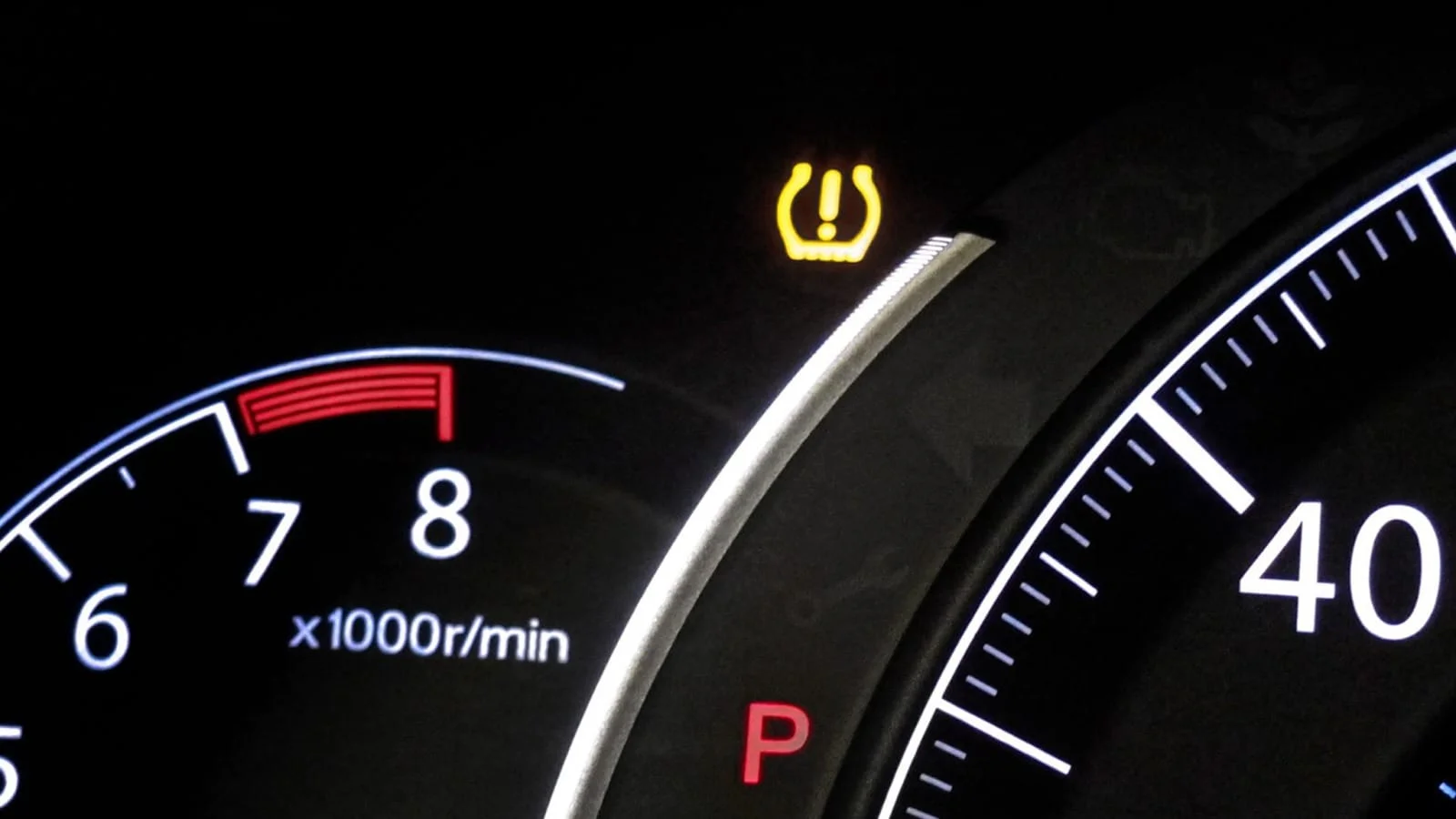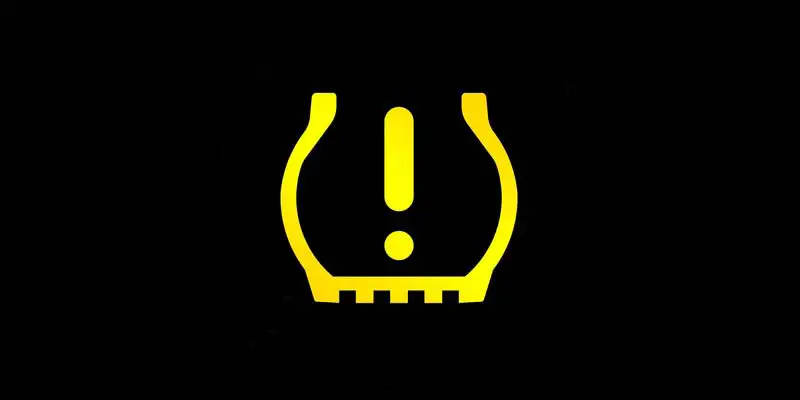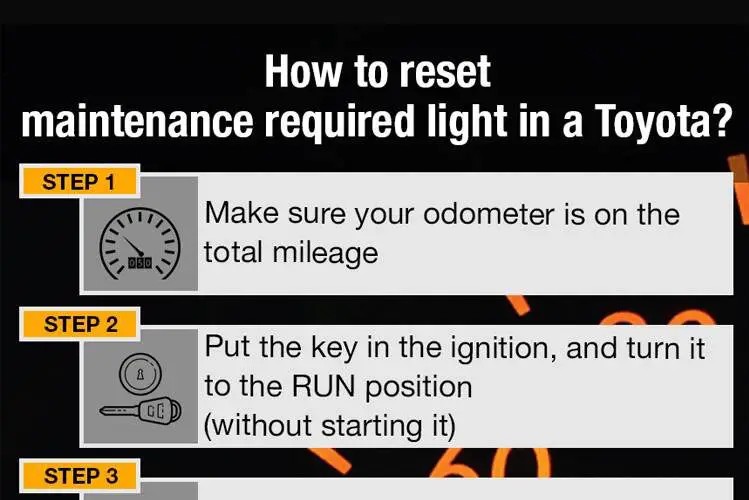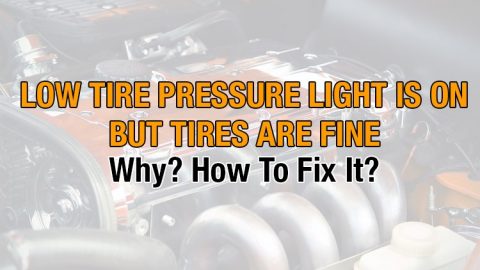Does the low-pressure light on Toyota models come on randomly? The light indicating low tire pressure might illuminate the dashboard when starting the car or while driving.
These low-pressure warnings mean either the tires need attention to attain the proper levels or there are malfunctions from the monitoring sensor.
The causes of the light may vary and the methods to reset it will be discussed in the following text.
What Does “Low Tire Pressure Light” In Toyota Mean?

The tire pressure light is an indicator that the tire pressure is low. It usually shows that there is a need to check the tire pressure by using a portable gauge manually and add air until the pressure reaches the specification for the Toyota model. However, it is wise to remember that the light would alert when the pressure is low or too high, and it does not replace the routine pressure maintenance protocols.
Why Does The Low Tire Pressure Light Come On?
There are several reasons why the low-pressure light may come on, and they do not always mean the tire pressure is too low or high. It could be a malfunction in the system or relate to another issue.

Light on when starting the car
It is usual for the tire pressure sensor light to activate when starting the car. It should only remain on for a few seconds and then go off. When it stays for a while, you should do some troubleshooting.
Similarly, the tire pressure sensor may reset once the air has been added to the tires. The light may go off as the sensor reads the new pressure levels. If it stays on, you should check for leaks or related problems that are not immediately obvious. Once the tire pressure is stable, then the issue is a bad sensor.
External temperature changes
If the vehicle is in a location where the mornings tend to be cold, you should avoid filling and measuring the tire temperature in the morning. Since at that time the air contracts, and will expand during the day when the temperature increases. So, the density of the air changes and makes the tire pressure warning comes on. This is also the case when the temperature externally drops.
There are times when the tire pressure monitoring light goes on and off because of changing temperatures. Should the pressure drop at night and increase during the day, the light may go off. If the light comes back, it will be evident that the temperature is the leading cause of pressure fluctuation in the tires. It is advisable to check the status of the tires or at least reduce the excess pressure if the driver fills the tire at night.
Damaged tire pressure monitoring sensors
Due to the location of the sensors on the direct system, they can be damaged over time when going over hard bumps or going through a tire service. The tire pressure monitoring sensors can show a wrong result if the onboard battery is too old and needs to be changed. Moreover, the sensor will also be damaged physically.
Slow Punctures
The low tire pressure light is also sure to come on when your Toyota vehicle gets a nail or another sharp object in its tires. The consequential slow puncture will cause a pressure drop, which the sensors of your tire pressure monitoring system will pick up and result in the activation of the light.
Bent Wheels
While this condition is not common, it still occurs, especially in Toyota vehicles that endure heavy-duty off-road driving. Bent wheels will slowly let out air from your tires, leading to the low tire pressure light activation.
Worn-out Tires
Old, worn-out tires will also keep the tire pressure monitoring light on. They will not hold air as well as newer tires. Their small cracks and tears will let air pass out slowly, so you will have to inflate them more often.
Is It Safe To Drive With The Light On?

It is not safe to drive with the tire pressure monitoring light on because it means the tires are either over or underinflated. That causes wear on the tires and could potentially lead to tire bursts or failure. As soon as the light appears, make sure you check the pressure on each of the tires. If one of them has low air, the best thing would be to add air to the point reaching the designation prescribed by the manufacturer.
Driving for an extended period on tires with low pressure may cause wear and even reduce the level of the fuel economy, not to mention the safety hazards involved.
How To Reset The Low Tire Pressure Light?
If you has confirmed the tire pressure on each of the tires, including the spare wheel, and the warning light does not go off, there are a few ways that it can be reset.
Driving at 50 miles per hour

This may seem like an impractical answer to the problem, but it works. It is also the easiest way to reset the tire pressure light. The cruise control feature attribute can keep the speed remain the same. After driving at 50 mph for a few hours, the car should be shut off and parked. Then the next time it starts, the light will probably be off.
Use the tire pressure monitoring reset button
Each of the tires has sensors. There are times when the sensor needs a bit of resetting. In this case, you should look for the tire pressure monitoring system reset button. Here’s what to do:
- Set the key in the ignition and turn it to the on position, but the car should not be started.
- Press and hold down the reset button until the low-pressure light blinks three times.
- Start the car and run for 20 minutes to let the computer reconfigure all of the sensors.

Deflating and re-inflating the tires
If the reset button does not work, the tires can be inflated to reach the proper pressure. Here’s what you can do:
- Deflate all of the tires to the level of near zero.
- Re-inflate the tires, so they reach the proper pressure, which is on the sidewall.
- Do the same for the spare wheels as they also have attached sensors.
- Drive at 15 miles per hour to reset the sensors.

Why Is The Light Still On Even When The Tires Are Fine?
There are cases when the tires are not overinflated or underinflated, but the tire pressure monitoring light is on.

Recent tire replacement
For the tire pressure monitoring sensor to work properly, it has to be on the tire’s rims. If there is a tire change, then the pressure monitoring system can be affected. The tire pressure monitoring system (TPMS) may reset due to the change, but it also depends on the sensor types.
Direct sensors utilize automatic readjusting, so the car resets the sensors after the tire has been changed. That makes it easier because the process is automatic, and it would not need to be reset manually. It would only take the vehicle a few miles to work on the readings and then adjust to the new pressure levels.
Indirect TPMS sensors are different. Sometimes the mechanic will have to reset the system manually. If this step is not done, the tire pressure sensor will continue showing the light on the dashboard. That may not necessarily mean it needs to be replaced, of course, but it is a matter of resetting it. During tire changes, it is also essential to check the light as you change the tire.
Faulty TPMS tools
When starting the car, the pressure light can turn on permanently. In this case, the TPMS tool is not working well. You can assess the condition of the tire before going to the mechanic.
The tool itself may be corrupted. Its valve stems are at times exposed to salt, water, or brake dust. These elements may cause problems for the sensor over time. Galvanic types of corrosion, for example, can hurt the sensor from the inside. If you use the wrong valve nut, it might cause a reaction between the two different materials. Moreover, valve nuts are not supposed to be used twice not just because of the seal used but also due to the coating on the tread. This means reusing the nuts causes friction and metal exposure on the stem, resulting in corrosion and eventual sensor failure. So, it could be a mechanical issue with the TPMS rather than the tires.
After confirming the pressure is expected, the thing to do is have the pressure monitoring sensor repaired.
Malfunctioning electronics
The batteries for the TPMS only last around six to ten years. A signal interruption will happen if they degrade, and the sensors will interpret this as reduced pressure. Similarly, short-circuiting and internal faults in the tire pressure monitoring system will cause the signal to fail.
Spare tire issues
Interestingly the four tires may be at the correct pressure, but the spare ones have low pressure. They also have their pressure sensors on the rims, which means if they dip below the standard, the tire pressure warning light comes on. This happens as well when adjusting the pressure of active tires.
Faulty wheel speed sensor
The wheel speed sensor is different from the speed sensor linked to the vehicle’s transmission. It records the vehicle’s wheel speed and reports that information to the electronic control unit, which coordinates the electronic functions on the Toyota model. If the sensor is damaged or malfunctioning, incorrect signals can be sent from the car’s computer to warn the driver of a problem that technically does not exist. Most car owners do not have access to voltmeters, so they have to rely on other signs of the failed wheel speed sensor, like a malfunctioning anti-lock braking system.
Conclusion
The low-pressure light on Toyota vehicles is one of the least severe indicators though it should not be taken lightly. It typically means the tire pressure is too low or high and needs to be checked. It is unsafe to drive with the light on, but the issue might stem from a faulty sensor rather than problematic tires. When this happens, resetting and further diagnosis can be made to solve the problem. Having the light constantly on is an annoyance and potentially dangerous as it desensitizes the driver to the actual low tire pressure instances.
Read more:



Recommended for you
Volvo Dashboard Symbols and Meanings
Kenworth Dashboard Lights and Meanings
Freightliner Warning Lights and Meanings